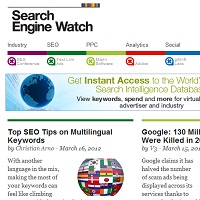Matt Cutts has recently argued that SEOs should spend more time thinking about the users’ experience as opposed to the search engines. While these two elements go hand in hand – you want users to be able to find your website as well as converting them – there is a truth to his words. A well designed and constructed website is far more likely to convert your traffic than one that is hard to navigate or difficult to understand.
So if you’re not sure about the user experience of your website, perhaps it’s time for a change, or at least to test the waters.
Test the Usability
This one is simple and easy, find someone – anyone – give them a task with your site and watch them achieve it. If they achieve it relatively quickly, then chances are that your site is easy to use. If they flounder and faff, then your interface definitely needs work. Ask them about it afterwards too, whether face to face or in a questionnaire to figure out why it was unclear. You could, alternatively, launch a survey and find out, without having to actually face the music, whether your site needs the usability improving. Online surveys will usually reach more people, analyze the results automatically, and users can give suggestions on how to improve too.
Is Your Site Accessible?
Ten percent of the population – that’s about 650 million people – live with a disability. There are also non-disabled persons who you should also cater your website to, such as illiterate adults and elderly people whose vision and dexterity may be deteriorating. These people are your customers too, so making sure that your site is usable for them is imperative. Little thing like having suitable ‘alt’ text on images can improve the user experience for these types of people.
Set Business Goals
An actionable goal will help you to figure out what you need to do to your website and how you’ll achieve it. Whether it’s increasing the number of visits, the time on the site or domain authority, creating goals will give you something to work to.
Take a Look at the Competition
Checking out your market competitors and leaders will help you to see that their sites are easy to use and beautifully designed. Having a look at the way their website works, whether or not it works well and why, will be useful when it comes to your own redesign. However, don’t copy your competitors, as it won’t have the same effect. Creating something unique but usable will set your business apart from the rest.
Don’t Forget the Content
Keyword stuffing should be avoided at all costs, and having all your content look and sound good to the users who are reading it, will add to the usability of the overall site. Your content should match your brand voice, otherwise it is confusing. If you have a blog, posting fresh content regularly will keep users coming back.
Fiona Glass writes for the WebMarketing Group a specialist SEO company based in Yorkshire, UK







